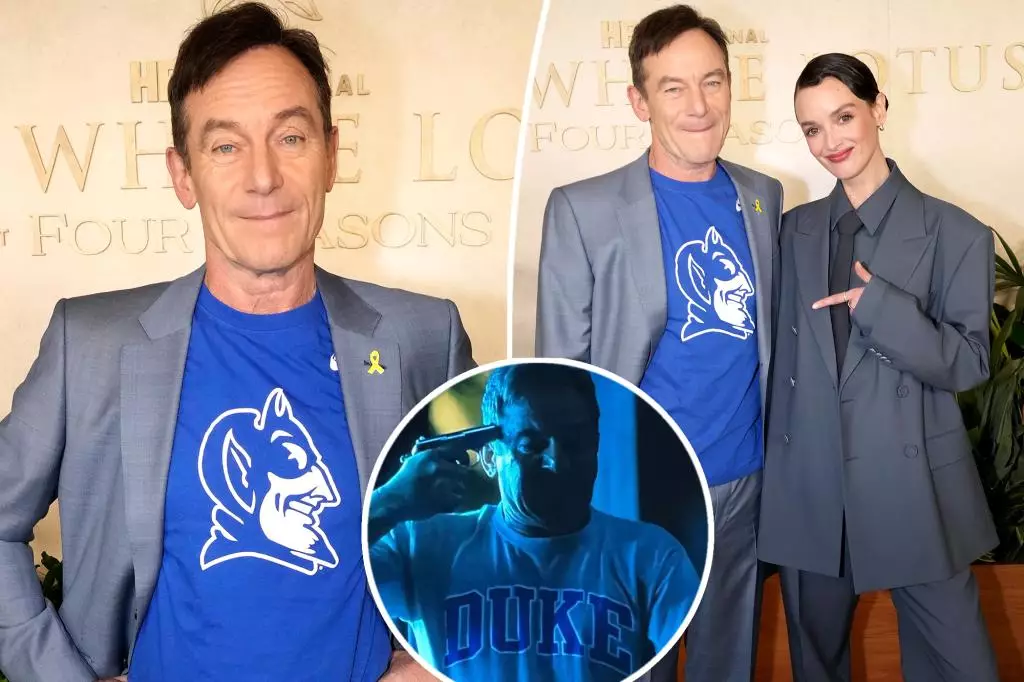In the current landscape of entertainment, where artistic expression often tips into contentious territory, Jason Isaacs’ recent red carpet appearance at “The White Lotus” finale exemplifies a striking blend of defiance and pride. The actor, known for his role as Timothy Ratliff in the hit HBO series, turned heads not just with his wardrobe but also with a deliberate choice that might stir the pot of public sentiment. Sporting a striking gray suit complemented by a vibrant blue Duke University T-shirt, Isaacs draws a distinct line in the sand—an assertion of identity that resonates with the complex themes of his character and the broader discussions around brand representation in media.
Controversial Imagery: A Double-Edged Sword
News breaks regarding Duke University’s discomfort with the portrayal of its logo in “The White Lotus,” where the imagery suggests an endorsement through a character’s tragic narrative. The school’s public statement suggests a tension between artistic expression and trademark representation, highlighting an increasingly relevant conversation on intellectual property and creative storytelling. The visuals in Episode 5, where Ratliff contemplates suicide while adorned in that iconic blue tee, serve not only as a plot device but also as a commentary on the struggle for identity against the backdrop of corporate branding. Isaacs’ choice, therefore, is an electrifying act of rebellion, challenging the university’s authority while reflecting the darker undertones inherent in Ratliff’s narrative arc.
Corporate Ethics vs. Artistic Freedom
Duke University’s assertion that the series misuses its trademarks raises critical questions about the balance between corporate ethics and the realms of creative storytelling. Frank Tramble, Duke’s vice president for communications, articulates a common frustration among educational institutions when confronted with portrayals that mar their image. Yet, one could argue that “The White Lotus” is utilizing these symbols to critique societal and moral dilemmas rather than simply use them as marketing ploys. In this light, Isaacs’ bold fashion choice at the finale could be interpreted as a reclamation of narrative power—a declaration that while institutions may impose restrictions, creative minds will find ways to navigate them.
Fashion as a Medium for Commentary
The red carpet, often a space for superficial glamour, transitions into a platform for social commentary through Isaacs’ attire. While other cast members explored more traditional fashion choices, Isaacs’ outfit cleverly juxtaposes the allure of Hollywood against a strikingly relatable piece of clothing that maintains a significant entanglement with character development. This approach transcends mere costume; it becomes a dialogue on identity, fame, and the intricacies of human vulnerability showcased in a high-stakes narrative.
As the public grapples with themes of mental health and the implications of corporate oversight in the arts, Isaacs emerges as more than just a performer. He becomes a symbol of the tumultuous balance of pride and criticism, authenticity and commodification, speaking to the heart of what it means to navigate these modern dilemmas. His unapologetic embrace of the Duke colors sends a powerful message—one of unwavering identity in the face of institutional scrutiny.

